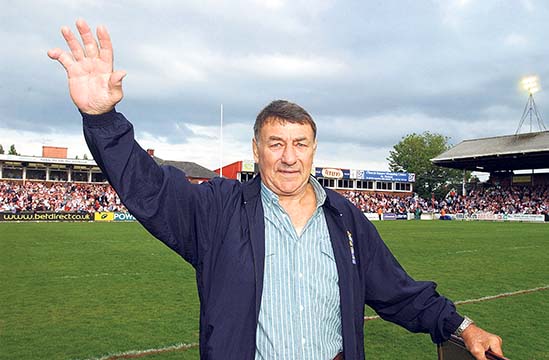 A Saint on both sides of the world
After excelling for Great Britain and St Helens, Dick Huddart moved to Sydney in 1964 to play for St George, who had won eight consecutive Grand Finals.
They would increase that astonishing run to eleven, although Huddart missed the 1964 and 1965 finals with injury before playing and scoring in the decider a
A Saint on both sides of the world
After excelling for Great Britain and St Helens, Dick Huddart moved to Sydney in 1964 to play for St George, who had won eight consecutive Grand Finals.
They would increase that astonishing run to eleven, although Huddart missed the 1964 and 1965 finals with injury before playing and scoring in the decider a Rugby League Heroes: Dick Huddart (Part 2)
 A Saint on both sides of the world
After excelling for Great Britain and St Helens, Dick Huddart moved to Sydney in 1964 to play for St George, who had won eight consecutive Grand Finals.
They would increase that astonishing run to eleven, although Huddart missed the 1964 and 1965 finals with injury before playing and scoring in the decider a
A Saint on both sides of the world
After excelling for Great Britain and St Helens, Dick Huddart moved to Sydney in 1964 to play for St George, who had won eight consecutive Grand Finals.
They would increase that astonishing run to eleven, although Huddart missed the 1964 and 1965 finals with injury before playing and scoring in the decider a 